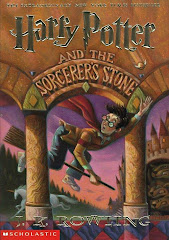A. Gregor Mendel: The Friar who Grew Peas
B. Cheryl Bardoe
C. Jos. A. Smith
D. Abrams Books for Young Readers, 2006
E. picture book, biography
F. 2-5
G. This book is a biography of Gregor Mendel who is most noted for his discovery of how genes are passed from one generation to another. He was born in 1822 in the Czech Republic and was fascinated by science. Once he had finished grammar school, his parents scraped together enough money so that he could go to a higher level school. However, during his stay there, his father broke his back and was no longer able to pay Gregor's tuition so Gregor had to pay it himself. Life was hard for Gregor until he became a friar, where he was able to eat and study without worry. He was eventually sent to the University of Vienna to pursue his studies in science. After returning to the abbey, Mendel started experiments with peas to figure out how traits were passed from generation to generation. He grew several generations of peas in order to find out that every trait was governed by two genes: recessive and dominant. He received no fame or attention during his lifetime but he is now known as the first geneticist.
H. The author of Gregor Mendel did an excellent job of explaining the genetics behind Mendel's work. The genetics is no easy topic to tackle, especially for younger readers. However, Bardoe and Smith did a great job of combining the text and illustrations to provide explanation of how genes work and how they affect the trait that appears in an organism. While the text was not "dumbed down" for the reader, it was simple enough for most readers to grasp the importance of Mendel's work and to fully understand what it was that he was doing.
As with Rosa, I was glad to see that the author took a lot of time to explain Mendel himself, and not only his work. It means a lot more to a reader or learner to know the person behind the great accomplishment. I'm sure Mendel's work would not have been quite as remarkable had he been some great scientist's son or had a ton of money to go to whatever school he pleased. Mendel had to overcome some astounding odds to get as far as he did in his schooling. I never know that he had to pay his way through school at 16! (and I thought it was bad now, as a 20 year old college student!). I was also amazed to find that no one really knew of Mendel's work until after he was dead. I would have thought that as earth-shattering as his work was, there would have been someone who would have taken notice.
The illustrations in Gregor Mendel are beautiful! Especially on the page where Mendel is examining pea pods in the middle of his garden with pea vines growing up all around him, you can really sense how content he must have been to be out in his garden. The joy he got from working with the peas and pursuing his greatest interest is so clearly evident. All of the illustrations have such vibrant and beautiful colors, just like nature.
Again, I was pleased to see a bibliography included in the book so that students could see where the author got her information and also where they could look for more information on Mendel and his work.
I. This book is obviously great for teaching about genes and genetics. However, if that topic is a little over the heads of the students, it's also great for introducing the scientific method. Mendel spent a lot of time making sure that each step of his experiment was carried out carefully to ensure that his results were accurate. I would have students come up with a hypothesis they want to test. Then, I would have them follow the scientific method to design an experiment and find out whether or not their hypothesis was true or false. Then, I would have all the students enter their projects into the school science fair.
Subscribe to:
Post Comments (Atom)










No comments:
Post a Comment